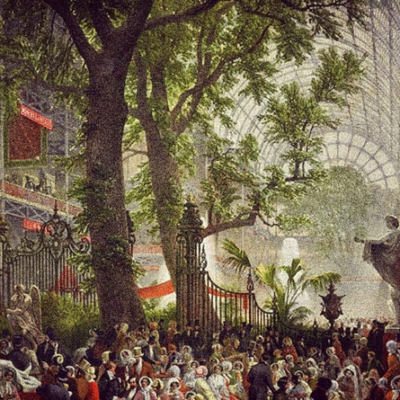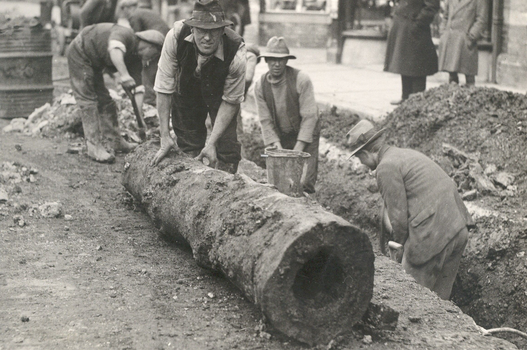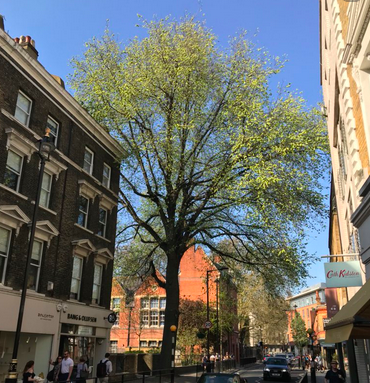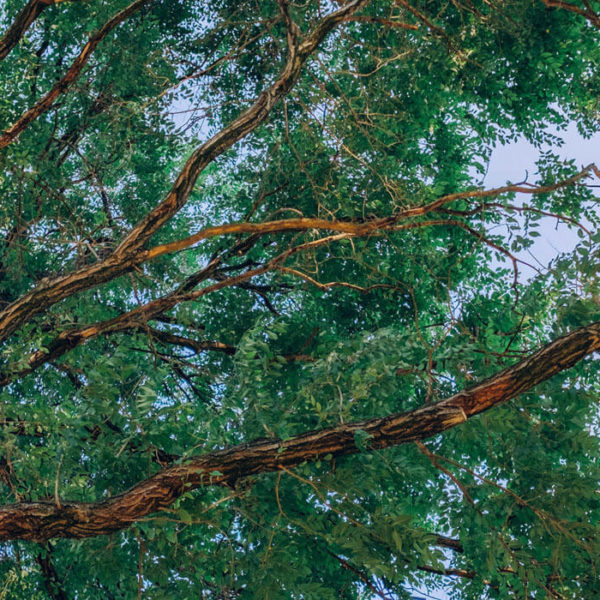The Elm Trees Of London
Matt Brown explores the historical and cultural aspects of the elm tree, and its particular importance to London.
I first encountered the elm when I was well into my thirties, and in a museum.
Just 50 years ago, that sentence would have read like dystopian science fiction. But Dutch elm disease* has so ravaged the species that whole generations have been robbed of their stately charm. Most people born after the mid-70s, I’d wager, have never seen a mature elm tree.

An Elm Tree built into the Crystal Palace for Hyde Park’s Great Exhibition of 1851
Elms were also great markers of landscape, both in town and country. In a rustic setting, elm was a popular choice for boundary markers. Farmers valued them for their leafiness long into autumn — a source of fodder when other plants had submitted to falling temperature. In towns and cities, elms were planted in great avenues. Greenwich Park, Hyde Park and Kensington Gardens were all noted for their imposing rows of elm. Two of the Hyde Park specimens spent a brief spell indoors, when the gargantuan Crystal Palace was built around and over them in 1851.
The deleted elms have not only left a hole on the horizon, but their absence also disconnects us from part of our history. Elms, like all native trees, have roots deeply entangled with our own heritage and culture. We see it most conspicuously in our place names. The south London area of Nine Elms — home to the US Embassy and a dizzying cluster of new skyscrapers — was named for a towering nonet of a leafier kind. The Seven Sisters of Tottenham were originally elms, since replaced by more disease-tolerant hornbeams. London contains further areas called Elm Park and Barn Elms. I can’t be bothered to count every instance in my A-Z, but it looks like some 350 street names enjoy an Elm component.
Elms figure heavily in English art poetry and literature. John Constable is perhaps the most noted painter of elms. He has left us a remarkable record of the great trees that once peppered Hampstead Heath. Meanwhile, writers as diverse as Sylvia Plath, Lousie Gluck and Aldous Huxley have penned odes to the trees. More recently, Carol Anne Duffy has written verse about English elms, which namechecks the Seven Sisters and mourns the
“great, masterpiece trees,
who were overwhelmed”
Since ancient times, the elm has held associations with death and the supernatural — perhaps because of the tree’s ability to resurrect itself from a stump. Coffins were commonly made from elm wood, as was the notorious ‘Tyburn Tree’ gallows in London. The related wych elm, though probably deriving its name from a word meaning ‘supple’, continues the uncanny theme.
Elms have also saved lives, in untold numbers. From the 17th century, pipes of hollowed-out elm were used to bring fresh water into the centre of towns. Elm is a particularly water-resistant material (part of the reason it made good coffins), and the ideal choice for plumbing before the Industrial Revolution. This engineered supply of fresh water reduced reliance on foetid wells and polluted watercourses. The impact on public health must have been immense.

Water pipes made from Elm Trees.
You can find examples of elm piping in many museums. My own first encounter, and with elms in general, came in Derby’s local history museum, and I’ve since found further pipes in the Kew Bridge Museum of Water & Steam Museum, Hertford Museum, Islington Museum and Abbey Mills Pumping Station. I dare say many other local museums display their own ulmaceous relics.
Piping was just one of the elm’s uses. It was considered second only to oak as a building material, especially for its water-resistant properties. Many old homes contain elm beams, and the material was even used to prop up the medieval version of London Bridge. You’ll find its timber in lock gates and boat keels to this day.

The magnificent Elm of Marylebone High Street.
The living trees have not entirely vanished, either. They carry on in a state of semi-quiescence. Pocket populations of mature trees survive here and there, most famously in Brighton, but an estimated 4,000 can be found across Greater London. Meanwhile, boundary hedgerows up and down the country retain shrub-sized elms — doomed resurrections of the mighty departed. Whenever one attempts to graduate into a fully-formed tree, it becomes susceptible to the spore-carrying beetles and quickly succombs. Elms remain rarities, or stunted non-entities that few take note of.
But, slowly, the elm is coming back. Disease-resistant saplings have been planted across London, including sites near Marble Arch and along Queen Victoria Street. Majestic survivors also stand on Richmond waterfront and — remarkably — overshadowing shoppers on Marylebone High Street. How many notice this last surviving street elm in central London?


